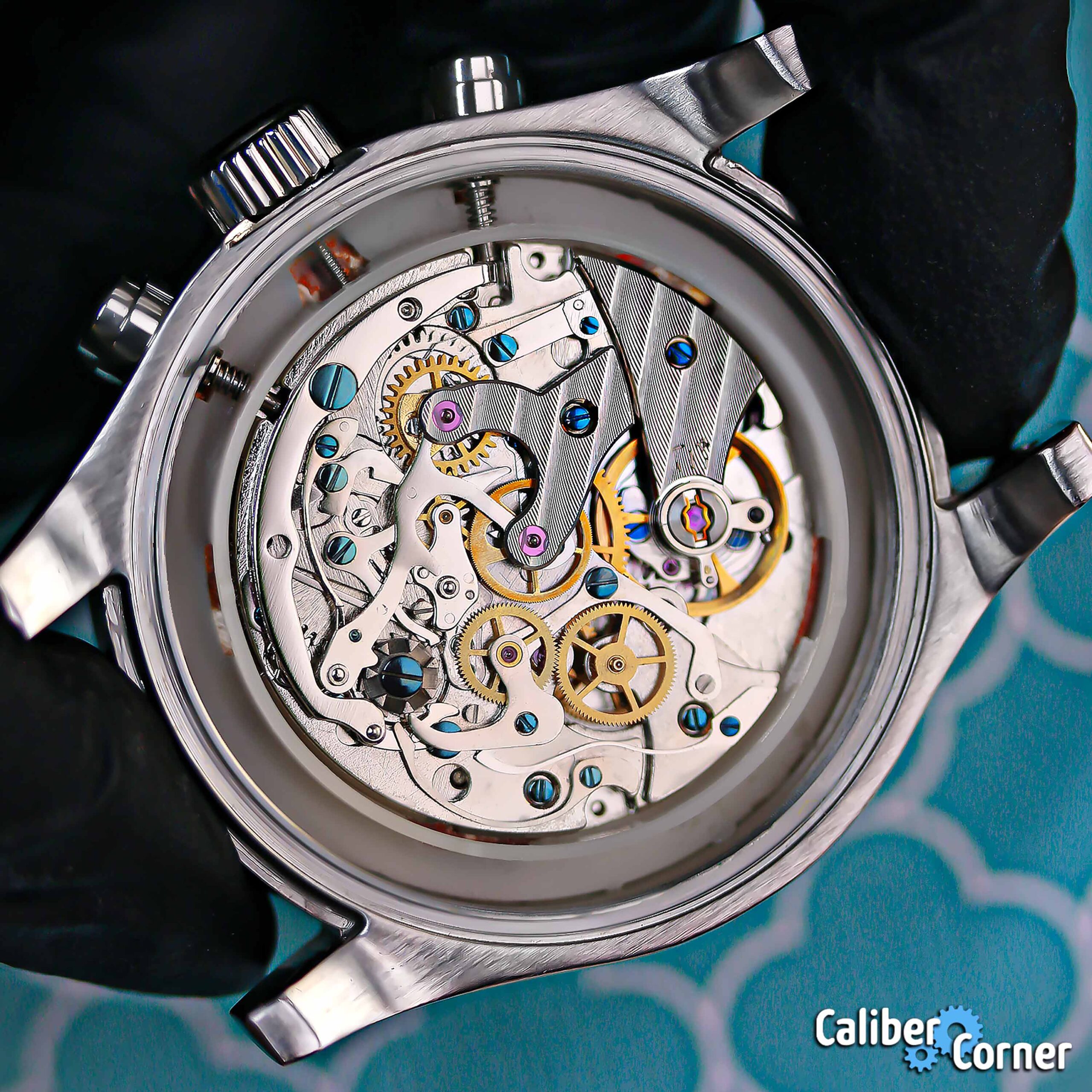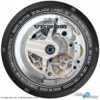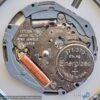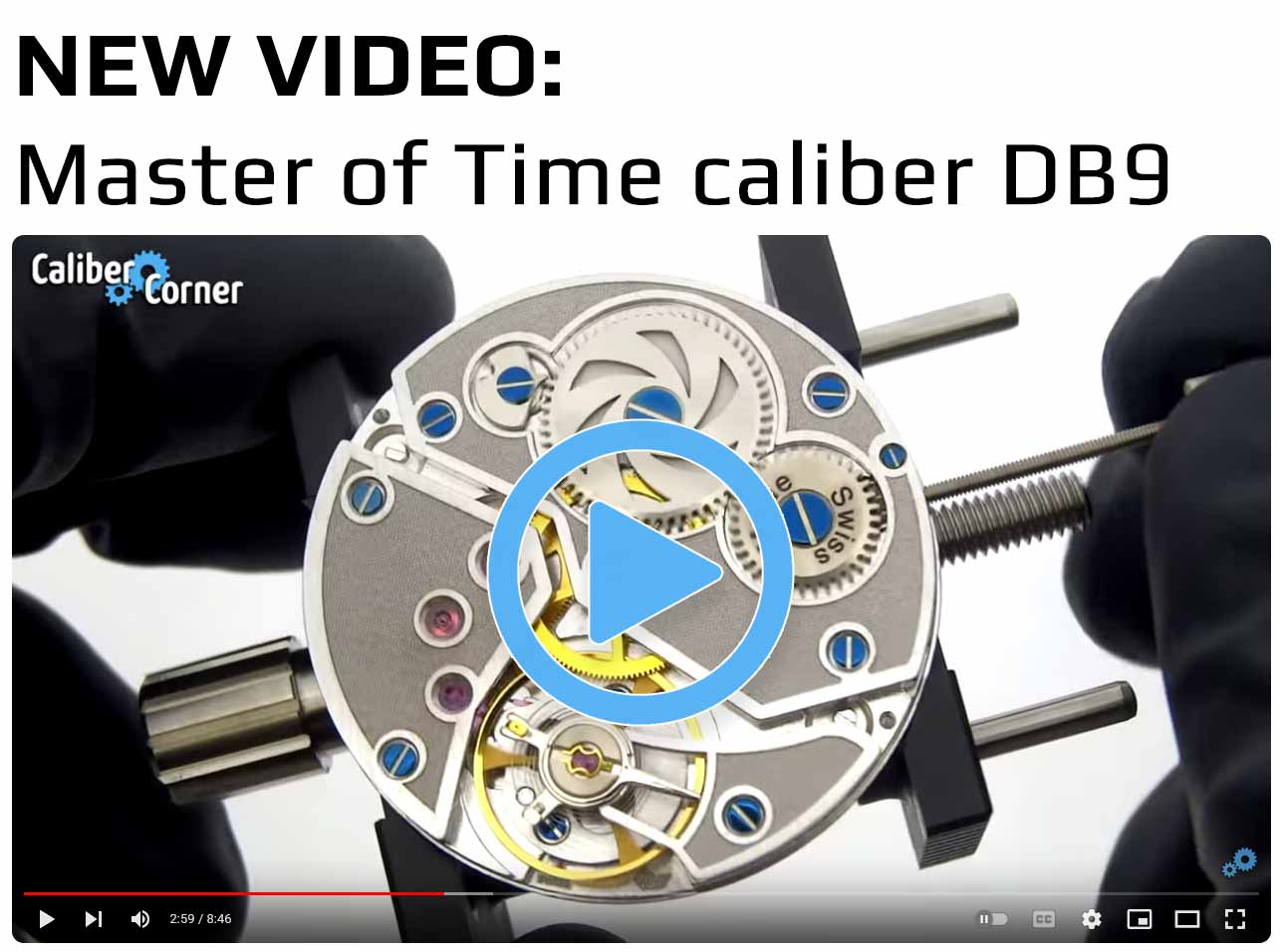| Manufacturer | Konstantin Chaykin |
| Caliber Number | K.06-0, K06-0 |
| In-House? | Yes |
| Type | Mechanical, manual-wind |
| Size | 42.5mm x 32mm |
| Height | 7.5mm |
| Total Components | 283 |
| Jewels | 33 (or 31? see below) |
| Vibrations Per Hour | 21,600 bph |
| Power Reserve | 45 hours |
| Escapement | Lever style |
| Anti-Shock Device | Incabloc |
| Regulator | ETACHRON style with a micro adjuster |
| Materials | Brass, steel, gold |
| Hands Count | 2 |
| Functions | Central hours; central minutes; animation at via miniature zoopraxiscope at 6:00 |
| Country of Manufacture | Russia |
| Known Models | Konstantin Chaykin Cinema |
The Konstantin Chaykin caliber K06-0 is a rectangular in-house mechanical movement with a unique, first-of-its-kind complication: a miniature zoopraxiscope which powers an animation at 6:00.
In Konstantin Chaykin’s own words:
“The calibre K.06-0 of the “Cinema” watch was developed by Konstantin Chaykin and is equipped with a miniature zoopraxiscope, a mechanical animation device which shows the image of a galloping horse. The movement was made entirely at the Konstantin Chaykin manufactory and is made according to the standards of haute horlogerie. Components finished using classical techniques: abrasive blasting; pearl and striped textured grinding; fine longitudinal, radial and circular grindings; manual chamfering, polishing; polished screw holes, pins and jewels; spherical polishing of the axel tips; and galvanized plating of rhodium and gilding. A distinctive feature of the movement is the use of five gold ouches, two of which are screwed, and a branded regulator (a device developed by Konstantin Chaykin to fine tune the effective length of the spring).”
Some of the topics covered in this caliber listing:
Zoöpraxiscope Complication:
Firstly, what exactly is a Zoöpraxiscope? Let’s let Wikipedia handle that one for us before this site turns into Camera Corner…
“The zoopraxiscope (initially named zoographiscope and zoogyroscope) is an early device for displaying moving images and is considered an important predecessor of the movie projector. It was conceived by photographic pioneer Eadweard Muybridge in 1879 (and built for him by January 1880 to project his famous chronophotographic pictures in motion and thus prove that these were authentic). Muybridge used the projector in his public lectures from 1880 to 1895. The projector used 16″ glass disks onto which Muybridge had an unidentified artist paint the sequences as silhouettes. This technique eliminated the backgrounds and enabled the creation of fanciful combinations and additional imaginary elements. Only one disk used photographic images, of a horse skeleton posed in different positions. A later series of 12″ discs, made in 1892–1894, used outlines drawn by Erwin F. Faber that were printed onto the discs photographically, then colored by hand. These colored discs were probably never used in Muybridge’s lectures. All images of the known 71 disks, including those of the photographic disk, were rendered in elongated form to compensate the distortion of the projection. The projector was related to other projecting phenakistiscopes and used some slotted metal shutter discs that were interchangeable for different picture disks or different effects on the screen. The machine was hand-cranked.” –Wikipedia
The name Eadweard Muybridge can be found at 6:00 on the case of the Cinema watch, as that is the name of the British photograph who is credited with inventing the Zoöpraxiscope projection device.
On the Cinema watch, there are two crowns located at 3:00 and 9:00. The crown at 9:00 is used to engage the Zoöpraxiscope mechanism and start the galloping horse animation at 6:00.
From the official press release:
“The animation movement in the Cinema Watch contains a Maltese cross stopwork which turns a disc engraved with 12 images of a galloping horse and rider in different poses. Konstantin Chaykin borrowed the concept of an obturator from cinematography: he included an obturator, a tiny shutter, to screen the animation aperture at the start of the animation cycle in order to prevent a blurry effect. During the animation cycle, the frames move at the rate of 1 per 0.07 second, as does the obturator at the beginning.” –source
Prototype:
Below is an image I captured during the Cinema launch event at Baselworld 2013 (that explains the bad image quality). Notice that the case is signed “Prototype”, but also see that the movement has 31 jewels. Konstantin Chaykin’s official site states that the K.06-0 has 33 jewels, the press images showing the same as below. It’s possible that the 33 number is an error, or maybe the final production model ended up with 2 extra jewels.
Movement Accuracy:
Konstantin Chaykin claims that the average accuracy on the calibre K06-0 is +/- 15 seconds per day.
Replacement Price:
As you can guess, of course there is no actual replacement price for a piece of mechanical haute horlogerie such as this. But, you may be interested to know that the retail price of the Cinema watch is around $100,000 USD. Also, it is sold out and available only as a special custom order.
Video Action:
Spelling Note: the Konstantin Chaykin marketing materials write this caliber as both K.06-0 and K06-0.
Additional Resources:





 network of watch sites
network of watch sites












Recent Comments
No, this caliber does not have a low battery indicator/EOL feature.
Does this movement have an end-of-life battery indicator system like Seiko's (jumping two seconds instead…
One more movement whose mother caliber is ETA 2824-2. This ETA 2824 has really become…
This caliber is made in China. Oversight when writing this caliber listing. Chart updated! Thanks…
Point of inquiry: Is this a Chinese-made Swiss-designed movement, or all Chinese? Asking because it's…
I have one of these in a Glycine. It gains about +1/d, if that. If…
Bonjour de France. Voilà ma modeste contribution à ce site qui m'est fort utile. Merci…